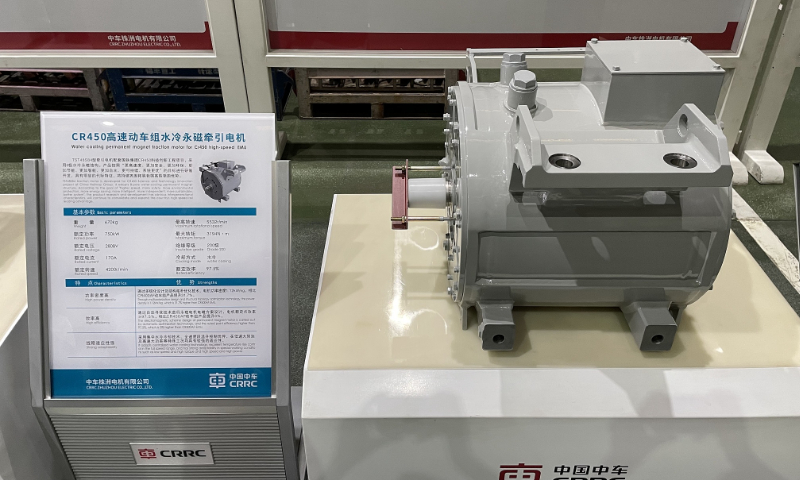New higher-speed Beijing-Shanghai bullet train not ready yet for commercial service: expert

A discussion about the travel time between Beijing and Shanghai being shortened to two and a half hours thanks to a new high-speed bullet train went viral on Chinese social media recently. Experts said the train is technically feasible, but the economic and safety aspects need further consideration before it is put into commercial service.
A high-speed CR450 electric multiple unit (EMU) train with an experimental speed of 450 kilometers per hour will reportedly be deployed on the Beijing-Shanghai high-speed railway (HSR) in 2025 and may cut the travel time between the two cities to two and a half hours from over four hours, according to the South China Morning Post.
The news soon topped the trending list on Sina Weibo.
Some netizens said they are looking forward to the new bullet train, while some raised questions about the travel time.
The operation cost of HSR, including energy cost, abrasion of railway as well as the ticket price, will be increased if the speed of the bullet train is raised to 450 kilometers per hour, Zhao Jian, a professor from Beijing Jiaotong University, told the Global Times on Monday, emphasizing that the most critical issue is safety.
According to a report by the Science and Technology Daily, China State Railway Group Co (China Railway) announced in January 2021 that it would initiate a scientific research campaign for the CR450 EMU train, in order to foster a Fuxing bullet train product with high safety levels, environmental friendliness and intelligent functions adapted to the 5G era.
In June 2023, China Railway conducted a trial operation of a CR450 EMU train on the Fuqing to Quanzhou section of the Fuzhou-Xiamen HSR in East China's Fujian Province. The CR450 EMU train completed bridge and tunnel speed tests at 453 kilometers per hour and 420 kilometers per hour, respectively.
"The CR450 EMU train has been technically proven via multiple tests but it is necessary to further ensure the safety and reduce the operation cost before it enters commercial service, in order to match the transport demand along the route," said Zhao.